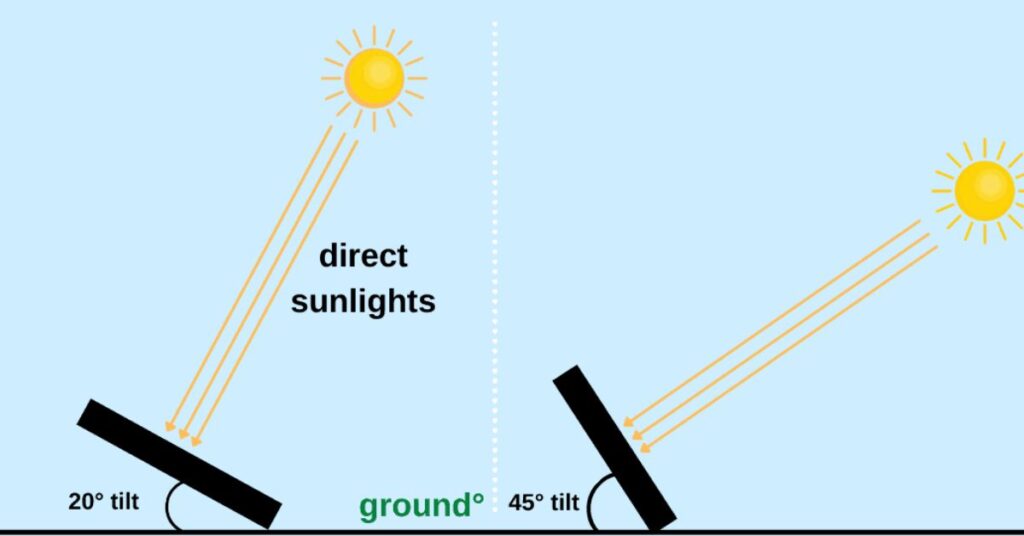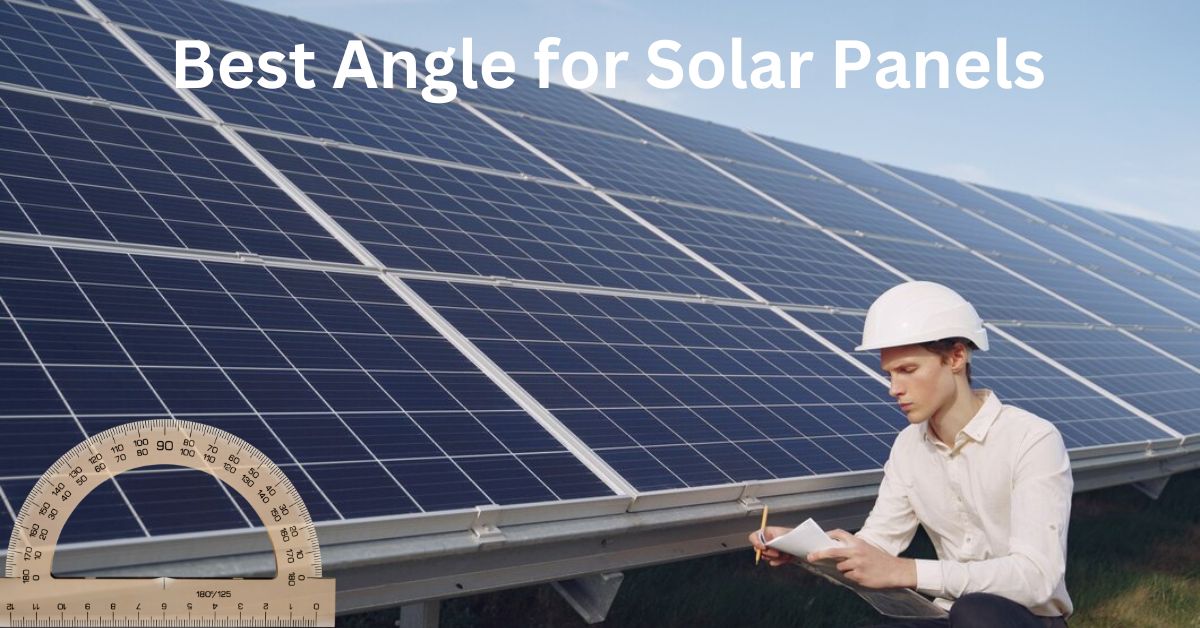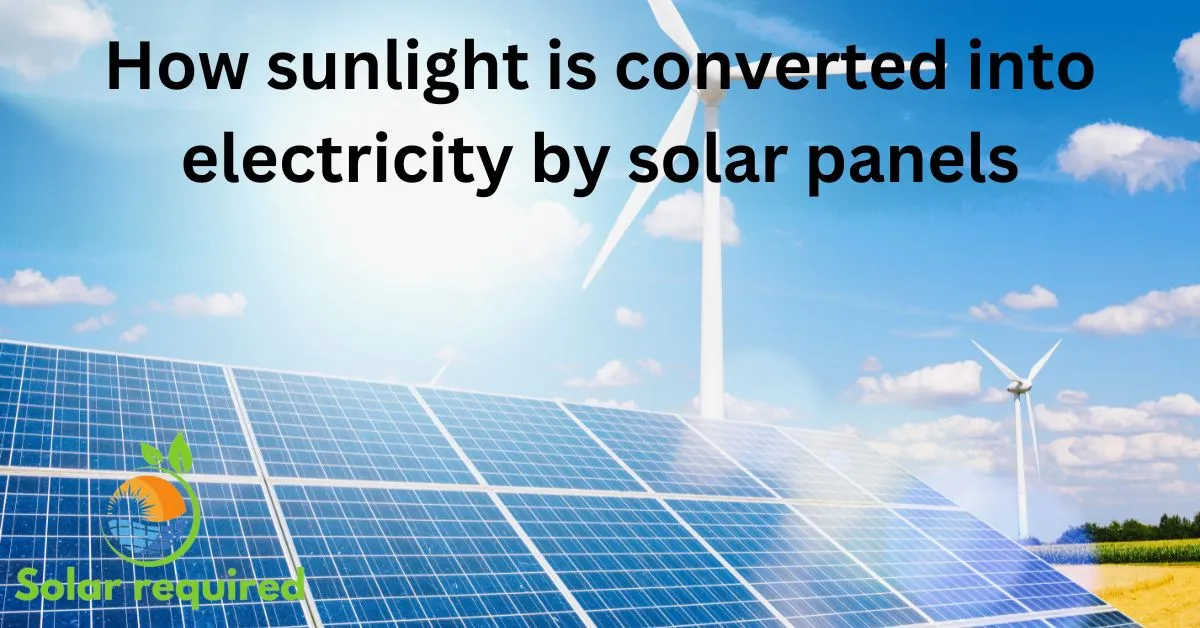Solar panels have revolutionized how we harness clean energy, but their effectiveness hinges on proper positioning. The best angle for solar panels is crucial. It maximizes energy production and ensures peak performance. As more homeowners and businesses invest in solar, it’s vital to position panels correctly. This maximizes ROI and reduces carbon footprints.
Finding the best angle for solar panels depends on a few things. These include location, seasonal changes, and local weather. This article will explore the best angle for solar panels. It will discuss how this angle varies by location. It will also provide tips on positioning solar panels. This will help readers improve their solar energy systems. They will learn to choose the best solar panel mounting angles for their needs.
Understanding Solar Panel Angles
What is the optimal angle for solar panels?
The optimal angle for solar panels is the angle that allows them to receive the most direct sunlight throughout the day and the year. According to the Department of Energy (DOE), south-facing solar panels perform best when tilted between 15 and 40 degrees. This range is often called the “sweet spot” for maximum output in the continental U.S.

How latitude affects panel angle
Latitude is a critical factor in determining the optimal angle for solar panels. The optimal angle generally equals the location’s latitude plus or minus 15 degrees. For example, in San Diego, which is at 33 degrees latitude, the ideal tilt for solar panels is 30 degrees. The National Renewable Energy Laboratory says 82% of U.S. buildings get enough sunlight to qualify for solar panels.
Seasonal angle adjustments
The sun’s location in the sky varies with the seasons. The ideal way to optimize solar energy output is to tilt the solar panels according to the changing angle of the sun on a seasonal basis. Seasonal tilt adjustments can boost solar panel energy output by 10–25% compared to a constant, year-round tilt.
If your latitude is between 25° and 50°, the optimal tilt angle for summer is (latitude × 0.93)—21°. For winter, it is (latitude × 0.875) + 19.2°.
Most of the time, solar panels will still produce enough electricity to make the purchase worthwhile, even if your roof is not between 15 and 40 degrees. Panels on a south-facing roof with a typical pitch (0 to 55 degrees) will lose only a few percent of their potential output compared to a roof with an ideal tilt.
People also read: Solar Panel Codes for Los Angeles County
Factors Influencing Solar Panel Angle
Geographical location
Your location’s latitude plays a critical role in determining the optimal orientation and tilt angle for your solar panels. As a general rule, the ideal tilt angle is often equal to your location’s latitude. A flatter tilt (almost horizontal) is better in low-latitude regions near the equator, where the sun is higher in the sky year-round. Conversely, a steeper tilt is better in areas farther from the equator, where it captures more sunlight during the shorter winter days.
Roof pitch
The optimal tilt angle for solar panels can be affected by the pitch or slope of your roof. The Department of Energy (DOE) states that a tilt of between 15 and 40 degrees is ideal for south-facing solar panels. In the U.S., residential rooftop tilts are most frequently between 18 and 34 degrees—pretty much optimal.
Most of the time, solar panels can generate enough electricity to make the purchase worthwhile, even if your roof is not 15 to 40 degrees. Panels on a south-facing roof with a standard pitch (0 to 55 degrees) will lose only a tiny percentage of their potential production compared to a roof with an optimal tilt.
Shading and obstructions
Nearby objects that cast shadows, like trees and buildings, can reduce solar panel efficiency. Conducting a solar panel shading analysis can help identify and mitigate shading potential issues. Trees grow, and the sun’s path changes throughout the year, so it is essential to account for seasonal changes. Using micro-inverters or power optimizers can help. They reduce the impact of shading on solar panels in shaded areas.
Calculating the Ideal Angle for Your Location
Using online calculators
Online solar angle calculators help you find the best solar panel tilt angle based on location. They usually require you to enter your address, city, or zip code to get your exact coordinates. The calculator then factors in variables like latitude, season, and desired energy output to calculate the ideal panel angle.
Most reputable online calculators provide recommendations tailored to your specific circumstances. They may prompt you to input details about your roof pitch and desired system size for more accurate results. The recommendations usually include estimated energy production and the best panel tilt angle for maximum output.
Online calculators are great for a starting point. But it’s best to get professional advice to assess things fully.
Manual calculation methods
Without online resources, several manual methods exist to find the ideal solar panel tilt angle. These techniques usually employ calculations that consider expected seasonal output and latitude.
A popular method called the “rule of thumb” recommends varying the panel’s tilt angle according to the latitude of the installation location. The ideal tilt angle is typically equal to the latitude + 15 degrees in winter and—15 degrees in summer in the Northern Hemisphere.
Another technique is to use solar charts. These charts show the sun’s movement across the sky at different times of the year. By referring to them, you can find the ideal tilt angle for your particular region and preferred season.
More advanced manual methods may involve multiplying the latitude by specific coefficients and adding or subtracting certain values to account for seasonal variations. One formula suggests that for the optimal winter tilt angle, multiply the latitude by 0.9 and add 29 degrees. For the optimal summer tilt angle, multiply the latitude by 0.9 and subtract 23.5 degrees. Sometimes, solar panels get hot in summer.
Professional assessment
Though manual methods and online calculators can provide insights, it’s best to consult solar experts for a thorough evaluation. Skilled solar installers may assess your site’s features, check for any shade from nearby structures or trees, and recommend the best spot for your panels.
Experts may also consider azimuth, or the direction the panels face. They may also consider tracking devices that change the panel orientation throughout the day. These are in addition to the tilt angle. These tests can help based on your situation.
They can ensure your solar panel installation is optimized for peak energy production and efficiency.
Maximizing energy production with proper angling
Benefits of the correct panel angle
Proper angling of solar panels is crucial for maximizing energy production. The tilt of the panels is essential because they will produce maximum energy when the sun is directly perpendicular to them. For example, the sun is low on the horizon during the winter in the northern hemisphere, so a steep angle of 60° is best for optimal performance. In the spring, the best angle is 45°, and during the summer, when the sun is high in the sky, a low tilt of 20° is recommended.

The best orientation for P.V. panels that sell electricity back to the grid is south at a 37° angle, which maximizes total electricity production. The optimal angle is the same for PV-thermal (PV-T) panels producing electricity and hot water.
Impact on efficiency and output
Their tilt and orientation significantly impact solar panel output and efficiency. During the day, south-facing roofs receive the most solar energy since they receive the most sunlight. The graph shows that the panels’ production will be impacted more by their distance from the south.
Instead of facing south, it may make sense to position the panels east/west for self-consumption of P.V. production. Standard energy use patterns say east-facing panels will generate more energy in the morning, and west-facing panels will produce more in the late afternoon.
Maintenance considerations
In the case of PV-T panels, when a roof has a fixed slope, it is not necessary to change the angle of the roof to get optimal production. Energy production will always be enjoyable, which is only sometimes valid with thermal solar panels for heating.
The spacing between rows of tilted panels on a flat roof is crucial to prevent shading and ensure optimal performance. As a rule of thumb, the space between rows should be at least two times the height of the tilted front row. This spacing can be adjusted based on precise shading calculations using tools like Google SketchUp.
Conclusion
Determining the best angle for solar panels significantly impacts their performance and energy output. Considering factors like location, roof pitch, and shading, homeowners and businesses can optimize their solar energy systems. This will help them capture more sunlight year-round. The right panel angle boosts energy production. It also improves ROI and reduces carbon emissions.
In summary, finding the ideal solar panel angle involves various online tools, manual calculations, and professional advice. While general guidelines exist, each installation is unique and may require specific adjustments to maximize efficiency. Users can maximize this clean energy by optimizing solar panel positions and making seasonal tweaks. It will help create a more sustainable future.
FAQs
1. How can I determine the optimal angle for installing solar panels?
Set your solar panels at an angle that matches your latitude to achieve the best year-round performance. For enhanced performance during summer, adjust the angle to your latitude minus 15 degrees.
2. What is the standard method for setting the angle of solar panels?
Set the solar panels’ tilt to match the site’s latitude to maximize annual energy output. For example, if the solar array is at a latitude of 50 degrees, the ideal tilt angle would also be 50 degrees.
3. Should solar panels be installed at an angle or laid flat?
Installing solar panels at an angle is generally more effective than laying them flat. Angled panels capture sunlight better, boosting efficiency. They work best when aligned with your latitude. Flat panels are prone to collecting debris and water, leading to reduced efficiency and increased maintenance.
4. Is there a mobile application that helps with solar panel positioning?
Yes, the app ScanTheSun can help. It finds the best solar panel orientation by checking for shading from obstructions and the panel’s optics. It utilizes your GPS sensor or Google Maps to ascertain your geographic location.


